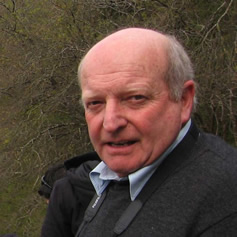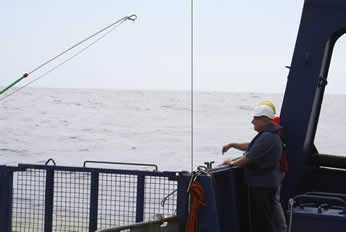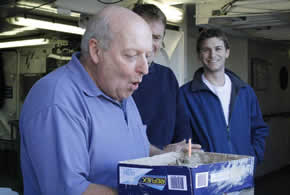
Being in charge of scientific operations on a large ship with a group of researchers – discovering the nature of the sea floor, collecting water samples and plankton and long sediment cores from the bottom of the ocean, sometimes below 5 km of water. A crystallising moment was surveying huge underwater canyons taller than the Grand Canyon, off Kangaroo Island. We watched the topography unfolding in front of us. Adrenalin levels run high, because work on the ship never stops and new features appear all the time. You discuss results with your colleagues and students day and night, and usually you catch up with sleep back on land … although after a two-week voyage, your body clock is completely out of tune.
Investigations of past climate and landscape evolution will become extremely sophisticated. People will develop new analytical techniques and new sites for climate proxy data, but it will be team work with a variety of fields of specialisation. Nobody will be able to publish results alone!
As a palaeontologist, I believe that a lot of new advances will be made in the field of ‘extremophiles’ – organisms that live under extreme conditions reminiscent of those experienced by early Earth, such as high temperatures, acidic conditions, or absence of oxygen. There will be significant advances once scientists can extract microbes below great piles of sediments in the deep ocean, where ambient temperatures are high, and in cracks in rocks found at great depths.

By chance, I uncovered patterns of climate change for the past, both on land and in the oceans. When I started doing the research, ‘climate change’ and ‘greenhouse effect’ were not part of the general vocabulary. Now, my investigations are important in the study of climate variability and in revealing patterns in it.
Many people! The book Inland waters and their ecology and its authors (limnologists Ian Bayly and Bill Williams) sparked my interest in studying the chemistry, biology, geomorphology and history of salt lakes in Australia.
Geomorphologist and palaeoclimatologist Jim Bowler was a pioneer investigator of arid zone Australia. He examined the interaction of people with the landscape, which also fascinates me. Another outstanding arid zone geomorphologist, Martin Williams, fostered my interests in Quaternary environments.
I cherish the multidisciplinary and international aspects of my work – ANU visitors Wang Pixian, Hisatake Okada and the late Brian Funnell helped with investigations of the oceans.
All of these exceptional scientists have amazing foresight, persistent scholarship and scientific endurance.

Science in high school wasn’t memorable, but two three-week long walking holidays were – to Lapland and central Iceland, towards the end of high school. They made me wonder how glaciers, hot springs, peatbogs and landscape features had formed. Nature would be my ‘office’! I love being outdoors, examining soils, rocks, plants, animals and clouds. Oceans and large lakes fascinate me.
What distresses me is the level of anthropogenic changes affecting the natural world. We need to inform everyone, including managers and politicians, of the alarming level of change at all scales. This is important for future generations and all life on earth.
© 2025 Australian Academy of Science